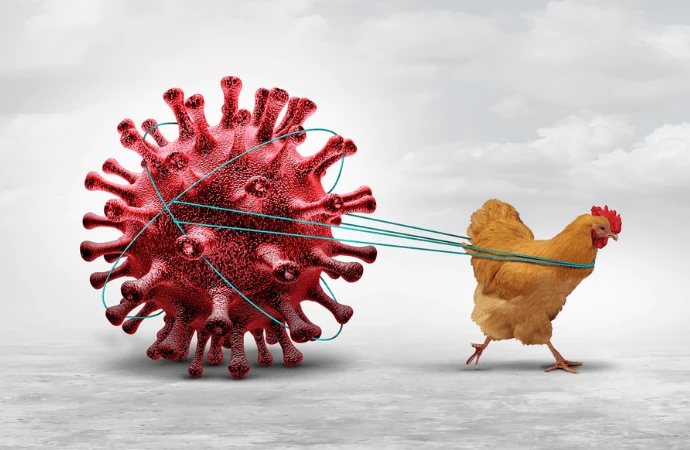Highly pathogenic avian influenza A(H5N1) viruses of clade 2.3.4.4b have been evolving and spreading worldwide, causing outbreaks in poultry and wild bird populations. These outbreaks have significant implications for food safety and security. Since 2020, there has been a notable increase in spillover events from birds to terrestrial and marine mammals, raising concerns about the transmission dynamics of the virus across species boundaries.
Emerging Threats of A(H5N1) Infections in Dairy Cows and Humans
The recent emergence of A(H5N1) infections among dairy cows in the USA marks a concerning development, highlighting the virus's ability to jump from birds to mammals and potentially impact food supply chains. Additionally, a human case of A(H5N1) infection without direct contact with infected birds underscores the need for comprehensive surveillance and investigation to understand the epidemiology and transmission routes of the virus.
Despite relatively few reported human cases of A(H5N1) infection compared to previous clades, the potential for a pandemic remains due to the virus's high pathogenicity and severity in humans. One Health strategies, which integrate animal, human, and environmental health, are crucial for effective surveillance and control of avian influenza viruses.
Strengthening Surveillance and Collaboration
Preparedness measures should focus on enhancing surveillance systems, strengthening laboratory capacities, and improving communication and collaboration between public health and animal health authorities. Clear clinical guidelines for the management of human cases, including the use of antivirals and vaccines, are essential for reducing morbidity and mortality associated with avian influenza infections.
Challenges in aligning goals and coordinating responses between different sectors highlight the need for international cooperation and a unified approach to pandemic preparedness. Negotiations for a Pandemic Treaty aim to address these challenges and ensure equitable preparedness and response efforts across countries.
Enhancing Preparedness for Future Avian Influenza Outbreaks
Maintaining and improving the global public health infrastructure established during the COVID-19 pandemic is crucial for strengthening preparedness for future outbreaks, including those caused by avian influenza viruses. Investments in research, surveillance, and response capabilities are necessary to mitigate the ongoing threat posed by highly pathogenic avian influenza A(H5N1) and reduce the risk of a new pandemic.
In conclusion, the continued evolution and spread of highly pathogenic avian influenza A(H5N1) viruses underscore the importance of proactive surveillance, robust response mechanisms, and international collaboration in mitigating the impact of these viruses on animal and public health.
Source: The Lancet
Image Credit: iStock






